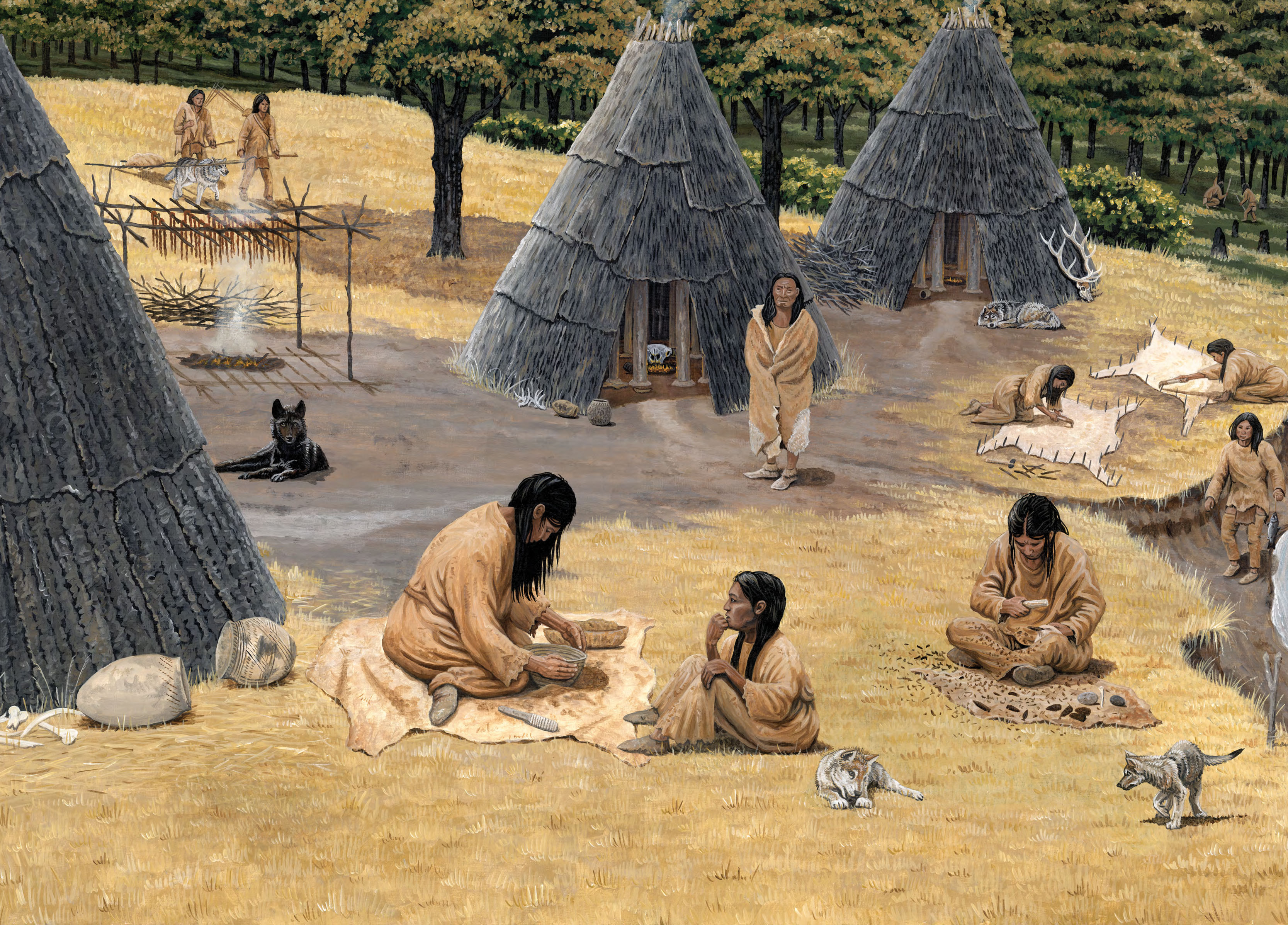About 2,500 years ago, the people of the Woodland• Came from forests in Minnesota and Wisconsin
• Appeared in North Dakota about 2,500 years ago era appeared in North Dakota. These people came from the forests of Minnesota and Wisconsin. The Woodland people hunted and gathered as the earlier groups had done, and they got corn through trade. The Woodland people were the first people in North Dakota to make pottery.
The Woodland people lived mostly near rivers where they had a ready supply of drinking water. Trees and brush that grew beside the rivers provided firewood and served as habitat for game which could be hunted. They protected their villages with walls made of upright logs.

Figure 8. Woodland pottery. Pieces of a pot found in North Dakota (right). Also shown is a replica (copy) of the pot (left). Pottery examples are on display at the North Dakota Heritage Center & State Museum in Bismarck, North Dakota. (Neil Howe)
Some of the Woodland people had houses that used wood frames covered with bison hides or grasses. The sites of a few Woodland villages have been found in North Dakota.
Another difference between people of the Archaic era and people of the Woodland era was in their burial traditions. In the Archaic era people placed their dead on platforms or under piles of rock. Some Woodland people buried their dead in the earth. After a body was placed in a grave, a mound of dirt was placed over the grave.
Sometimes weapons, tools, and other possessions were also placed in the mounds. These mounds became big cemeteries, and some were used for hundreds of years. This practice earned the Woodland people the nickname “Mound-builders.”
About 1,400 years ago, North Dakota became home to the Late Woodland• May have been ancestors to the Mandan Indians
• Appeared in North Dakota about 1,400 years ago culture. The Late Woodland people may have been ancestors to the Mandan Indians, but archaeologists do not know this for sure. The Late Woodland people lived much like the earlier Woodland people, raising crops and hunting bison, but they also depended more on fishing.
We Are All Equal
The color of skin makes no difference. What is good and just for one is good and just for the other, and the Great Spirit made all men brothers.
I have a red skin, but my grandfather was a white man. What does it matter? It is not the color of the skin that makes me good or bad.
- White Shield, Arikara Chief

Figure 9. Plains Woodland Camp Scene. (State Historical Society of North Dakota)
Notable American Indians of North Dakota
As you continue your study, you will notice full-page tributes to eight notable American Indians of North Dakota. These seven people include Keith Bear, Mary Louise Defender Wilson, Sitting Bull, Sakakawea, Four Bears, Cynthia Lindquist, Josephine Gates Kelly, and Louise Erdrich. Please study these tributes to learn how these North Dakotans have contributed to the history and culture of our state.


